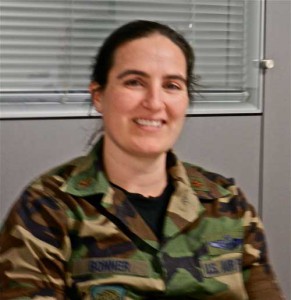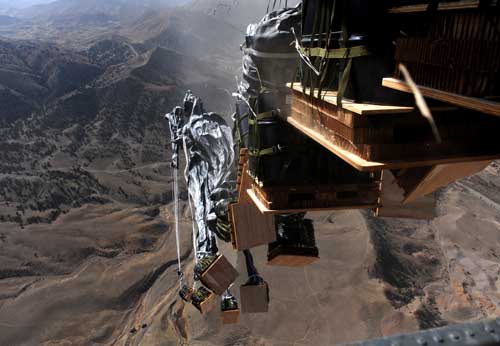The Adjudication Piece
An Interview with Major Corinne Bonner

06/09/2011 – During the roundtable at the Tanker Airlift Control Center (TACC) , the discussion closed with the challenge of adjudication (i.e. matching resources to demand and bringing plan and reality together). Major Bonner led this part of the discussion.
SLD: What does the Barrel do?
Moderator Comment: Once the plan is built, taking into account the weather, it goes to the allocation phase. So, there are “x” number of missions planned, now we have to match those missions up with available iron and air crews, and that’s where the major comes in.
Major Bonner: Like you said, the demand for tankers significantly outweighs the availability of assets. And some of that goes to the fleet structure; who owns what assets. We can only task active duty tankers unless we have some sort of long-term or short-term contract with the air reserve components.
SLD: Who controls the reserve assets?
Major Bonner: It depends on the type of unit. Some of them are unit-owned.
SLD: The state of Mississippi has its own air tanker fleet, that kind of thing?
Major Bonner: When it comes to the active-duty assets, we (TACC) can directly task those assets. When we want to use Air National Guard or Air Force Reserve crews and aircraft, instead of tasking, we ask them for participation when we are not in a mobilized status.
SLD: So, you’re a requester, not a demander?
Major Bonner: For reserve air components, it is based on volunteerism. And a lot of that ties into having the mandays and financial resources available to facilitate bringing those crews on orders for the mission.
SLD: So, okay. I have a need here. Your general calls who, for example?
Major Bonner: He would call the guard and the reserve commands, directors, their A3s. And we actually have liaisons here in TACC from both the guard and reserve side to facilitate those discussions.
SLD: I love this — the federal air tanker fleet.
Major Bonner: Say I have a C-130 mission. If I don’t have enough active duty or long-term reserve or guard forces to support the mission I would talk to our guard and reserve liaisons to say, here’s a mission, can you find a volunteer unit to fly it? This is a good process and works effectively when we can forecast requirements a few weeks out because most of the Air Reserve Component people are traditional, meaning they work civilian jobs most of the time. So, if there’s a mission that shows up three days from now, you’re generally not going to be able to find a volunteer on such short notice.
 Forty bundles of fuel fly out the back of a U.S. Air Force Globemaster III aircraft assigned to the 816th Expeditionary Airlift Squadron, on target during an air drop mission over Afghanistan in support of Operation Enduring Freedom, Dec. 8, 2010. (Credit: U.S. Air Forces Central Public Affairs 12/9/10)
Forty bundles of fuel fly out the back of a U.S. Air Force Globemaster III aircraft assigned to the 816th Expeditionary Airlift Squadron, on target during an air drop mission over Afghanistan in support of Operation Enduring Freedom, Dec. 8, 2010. (Credit: U.S. Air Forces Central Public Affairs 12/9/10)
SLD: That sounds interesting. So, you have to stratify this in two ways. One is here are my assets.
Major Bonner: Right.
SLD: And here I can manage my assets up against five times the demand. And now I have to prioritize that. Then of the remaining demand, who can I chop this to this week or tomorrow?
Major Bonner: Yes. And there are a lot of factors to consider. Who can volunteer for it, or is there the proper amount of man-days or funding to pay for it?
As you start getting that delta between what you have available and what there is out there, that gets briefed to the TACC commander. If required, the 18th Air Force and AMC will get involved, and that’s where they weigh in to say we need to ask for more volunteerism, or they can make decisions about reducing the amount of training missions our crews conduct in order to dedicate those crews and aircraft to operational missions. Or, hypothetically, they can also look at the projected demand for airlift, air refueling and aeromedical evacuation for the next six months, and using those forecasts they can explore the option of mobilizing guard or reserve units, if required.
SLD: But at the end of the day, this must be one hell of a task to forecast in some way or to anticipate. Because you’re obviously anticipating. You’ve got to anticipate.
Major Bonner: That’s what you spend half your time doing because the appetite for airlift, air refueling and aeromedical evacuation capabilities is insatiable, while our fleet strength is generally static.

